How to Use PPC to Help Reduce Cart Abandonment on Your eCommerce Site
-

Aaron Gray
- Blogs
-
 January 27 , 2023
January 27 , 2023 -
 13 min read
13 min read
A loaded shopping cart, is a sight for sore eyes for any store. Undoubtedly, seeing a laden cart left unattended at a corner or an aisle without a customer can be disheartening. Of course, one could presume that the customer might have left temporarily to fetch something they missed. But what if the cart remains unclaimed? All those products remain unpurchased, leading to a disgruntled staff member having to restock each item.
In such a scenario, we’re facing the issue of cart abandonment, a problem not exclusive to physical stores. Digital storefronts treat cart abandonment with serious concern as it represents potential lost revenue. The gravity of the situation will become apparent as we delve into the numbers, but understand that every instance of a customer abandoning a cart is a legitimate cause for concern. To mitigate such challenges, efficient Google Ads services could be a game-changer.
Over the years, marketers have sought ways to combat this threat to a business’ bottom line. One such solution involves pay-per-click (PPC) marketing, specifically PPC retargeting. This blog post will explain how PPC can help reduce cart abandonment on e-commerce sites.
The hard truth
E-commerce has some hard-to-swallow truth pills, one of which is how many customers actually purchase something. For every 100 customers that visit an online store, only about 20 successfully check out. The rest end up abandoning the purchase journey partway through.
Cart abandonment wildly varies by industry. SaleCycle, a behavioural marketing firm based in the U.K., reports the global rates for the last three years, including this year, as follows:

Consumer electronics and groceries have had some of the lowest abandonment rates throughout the period, dropping to an all-time low this year. The rate for groceries makes sense, as people prioritise having essentials at home. As for consumer electronics, the demand was largely due to the pandemic keeping people at home for most of the first two years of the timeframe. A good example was the record-high sales of Nintendo Switch handheld consoles in 2020.
But for other industries, mostly non-essentials, cart abandonment is fairly common. The reasons for this can be divided between governable and non-governable. Most are governable, such as:
- Forcing visitors to sign up for an account
- Employing a convoluted checkout process
- Slapping unexpected shipping costs
- Having an ambiguous return policy
- Not providing enough payment options
- Not addressing the site’s technical issues
On the other hand, non-governable reasons include people just looking around without intending to buy. SaleCycle reports that it’s the most common in many sectors, namely fashion and retail.

Of course, you can’t force someone to buy something if they aren’t ready or don’t see the need to. On that note, aggressive marketing tactics are a good way to get on their bad side, probably causing some customers to swear never to return.
While it’s impossible to eliminate cart abandonment, you can make it happen less often with a bit of smart marketing. This is where retargeting ads with PPC come in.
Rekindling customers’ interest
In an effective PPC marketing campaign, a business pays the advertising platform, usually Google, every time a user clicks on its ad in the search results. For example, you’re selling something worth USD$200. To maximise product exposure, you run a PPC campaign for a specific keyword for USD$2.00 per click. A random buyer clicks the item listing and buys it after some scrutiny. The USD$2.00 lost as payment to the advertising platform is nothing compared with the USD$198 you made from a successful sale if it resulted in such.
The PPC ads appear in four forms: shopping listings, search results, social media posts and banner ads. In the example below, two of these appear in the results for “storage shelving.”
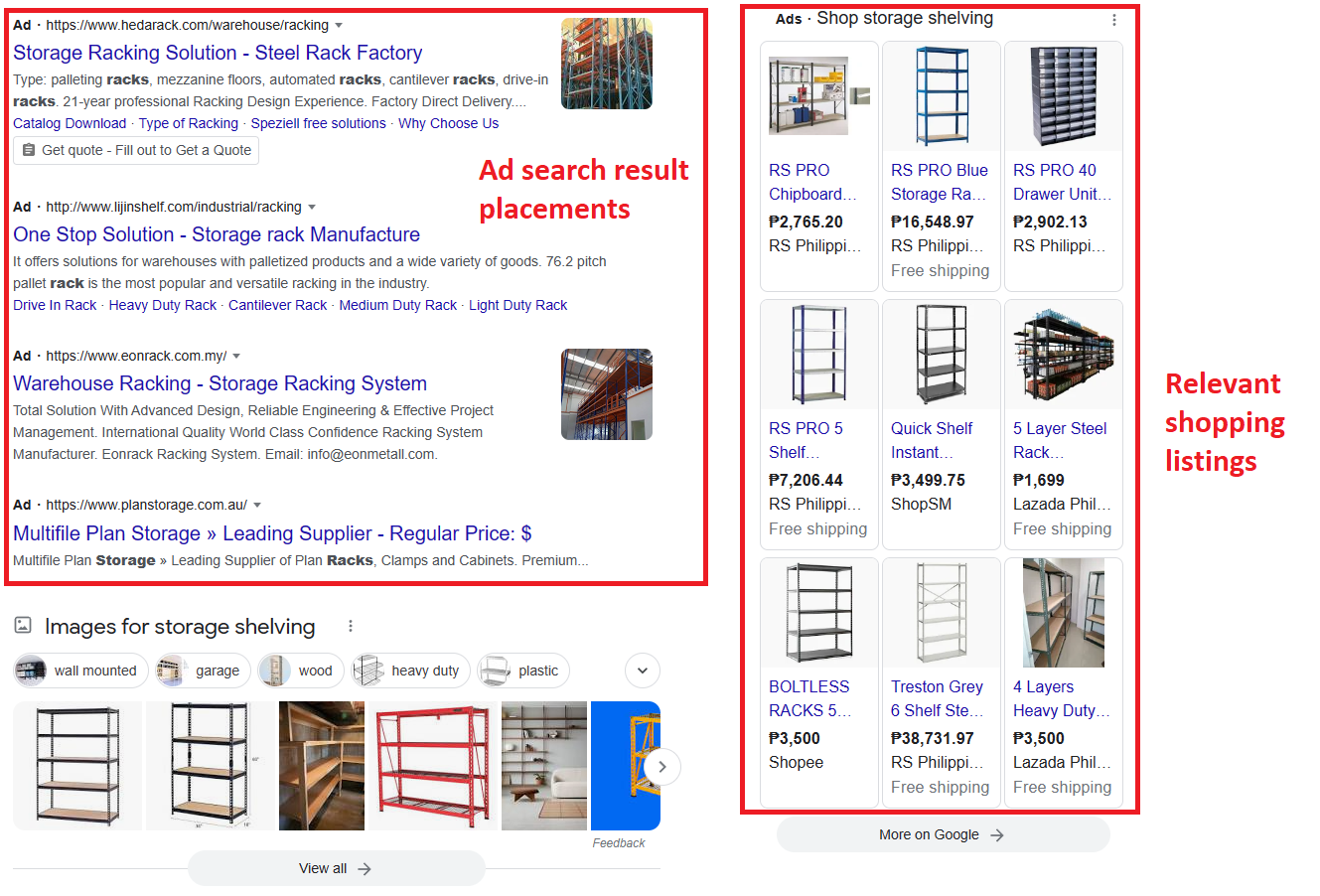
In harnessing PPC, businesses bank on the fact that customers looking around the first time will become buyers when they return. Making the most out of this approach warrants a tactic known as PPC retargeting. Someone who’s visited your site is more likely to receive ads about your products or services the next time they Google a relevant query.
Many marketers need to distinguish retargeting from remarketing and vice-versa. While these have the same goal of re-engaging customers who didn’t complete the buying journey, the difference is in the target audience. Whereas remarketing usually focuses on existing customers, retargeting helps attract new leads to augment the current customer base.
Additionally, with retargeting, businesses can also enjoy other benefits, such as:
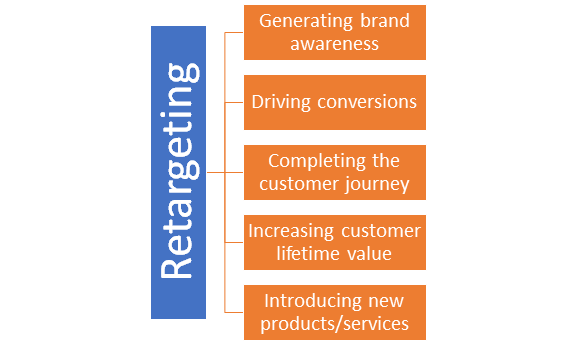
Retargeting also works on social media platforms like Facebook and LinkedIn. If a customer has recently visited a business’ Facebook page but made no purchase, they may see the business’ posts on their news feed. The same thing may also happen to those who’ve never visited a page, owing to factors like search history and fitting the business’ target demographic.
How much can a retargeting ad strategy reduce cart abandonment? Unfortunately, there are no hard and fast numbers because there are too many factors to consider. Yet you can base overall performance on abandoned cart recovery, which many e-commerce platforms like Shopify allow through specific tools and features.
Below are recovery rates from a benchmark report released by Klaviyo, a marketing automation firm based in the U.S. Any effort to reduce cart abandonment through PPC retargeting should at least improve on these rates to be considered a success (currency is in U.S. dollars).
| Orders Per Month | Basket Size | E-Commerce Company Size | ||
| Top 10% | Average | Bottom 10% | ||
| 1-99 | $1-$49 | 12.5% | 3.1% | 0.5% |
| $50-$99 | 12.1% | 3.5% | 0.7% | |
| $100-$499 | 11.8% | 4.1% | 0.4% | |
| $500+ | 14.9% | 3.9% | 0.6% | |
| 100-499 | $1-$49 | 11.7% | 2.8% | 0.5% |
| $50-$99 | 13.1% | 3.0% | 0.5% | |
| $100-$499 | 12.9% | 4.7% | 0.5% | |
| $500+ | 13.8% | 5.1% | 0.5% | |
| 500-999 | $1-$49 | 10.3% | 3.4% | 0.6% |
| $50-$99 | 14.1% | 3.4% | 0.5% | |
| $100-$499 | 10.1% | 4.7% | 0.6% | |
| $500+ | 9.1% | 4.4% | No data available | |
| 1000+ | $1-$49 | 11.4% | 2.3% | 0.4% |
| $50-$99 | 11.4% | 3.8% | 0.5% | |
| $100-$499 | 11.1% | 5.0% | 0.4% | |
| $500+ | 11.0% | 5.4% | No data available | |
The triad of strategic retargeting
Experts often advise retargeting ads because of the vastly higher click-through rate (CTR) and conversion rate. One estimate recorded a retargeted ad’s CTR at ten times as much as the CTR for a regular display ad. Meanwhile, the conversion rate for retargeted ads is nearly 300% higher than for regular display ads.
When coupled with retargeted site visitors and its cost-effectiveness, a retargeted ad can greatly improve a business’s return on investment (ROI). Know that ROI is a crucial metric of a PPC campaign’s success.
In developing a strategy for this, marketing experts suggest keeping three things in mind: timing, relevance, and convenience. These factors form a well-oiled retargeting machine; if one of these gears stops turning, the system grinds to a halt.
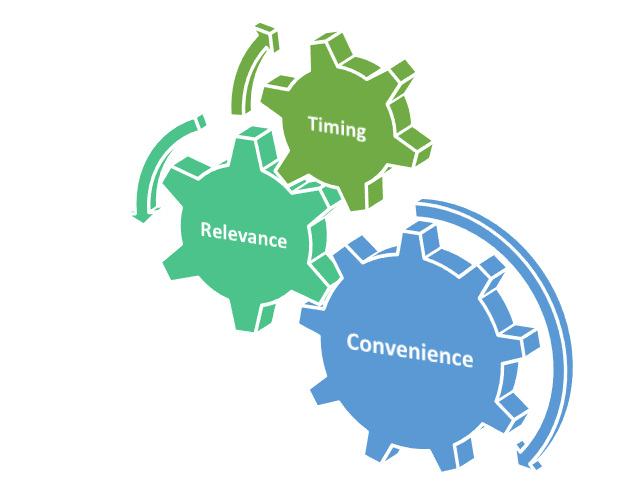
1. Timing
One advertising industry leader once said that the most recent data is the game-changer in nearly every business scenario. A world of difference separates a person who searched for something five minutes ago from someone who did the same thing several weeks ago.
Experts are divided as to whether to retarget immediately or in the long term. The idea of a “recency bump” suggests that the CTR of ads peaks between 10 and 30 minutes of launch. Past the 30-minute mark, the CTR starts going downhill. Here’s an analysis of 200 personal finance display ads, establishing the relationship between CTR and enhanced CPC.

However, in a 2020 whitepaper published in the American Marketing Association’s Journal of Marketing, researchers explained that the bump could be misleading because it doesn’t consider causal impact. Two separate experiments in the paper confirmed that long-term ad retargeting worked better than short-term.
So, what’s the middle ground? According to one cited study, waiting too long – 48 days, to be exact – can render any retargeting efforts ineffective. Similarly, retargeting a week after cart abandonment is less likely to generate any meaningful gains in purchases. You’d want retargeting done somewhere in between.
2. Relevance
Relevance is self-explanatory; ads must match the correct keywords and, more importantly, search intent. Facebook and Google, among other platforms, factor relevance into an ad’s overall quality.
Regarding Google Ads, relevance is measured in three grades: above average, average and below average. An average grade is the bare minimum for the platform to be able to run the ad in its preferred search queries. On the other hand, a below-average grade is frequently the result of one or both of the following reasons:
- Ad groups not focusing on a particular keyword theme
- Ads copied from one group without tailoring their keywords
The ideal approach to improve ad relevance is scrutinising the ad copy before release. Check the keywords and ensure they belong to the right ad group. You’d also want to keep the copy as simple as possible but with a strong call to action (CTA).
3. Convenience
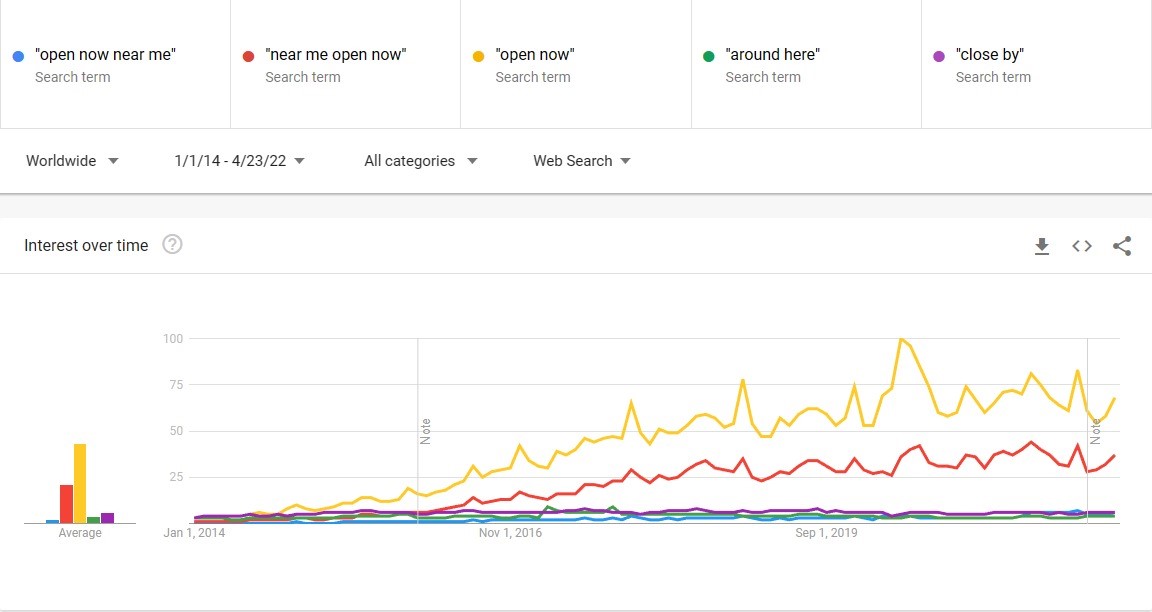
Convenience is the least relevant to retargeting, as it focuses more on customer experience after clicking on the ad. However, you can still use it to your advantage through keywords.
Lisa Gevelber, Google’s Chief Marketing Officer for the Americas Region, cites “near me” queries as an example. Between 2015 and 2017, Google logged a 500% increase in queries along the lines of “dentist near me” or “rainwater tank near me.”
It isn’t a one-off either. In his 2022 Retail Marketing Guide, then Google Americas president Allan Thygesen wrote that global searches for “open now near me” have been growing by up to 400% year-on-year since 2019.
Both trends justify the need to make retargeted ads appear out of convenience, i.e., locating a local store. “Near me” searches were so prevalent that some businesses in the U.S. had taken notice and decided to name themselves like these:

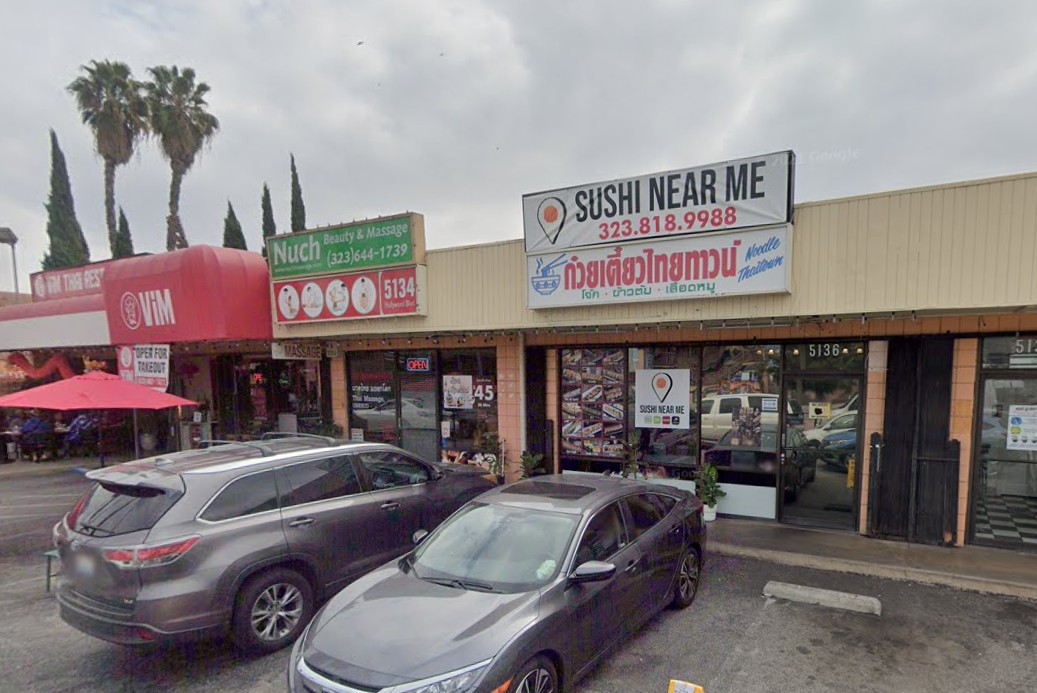
Google eventually fixed this, with “near me” searches prioritising proximity over business names. The names are hilarious (and witty in an SEO sense) though.
Retargeting techniques
Businesses lose billions when customers don’t finish their purchase journey, but forcing them to do so is ill-advised. That said, there are ways to urge people to go to the checkout without being too pushy, primarily by optimising the ads.
1. Personalisation
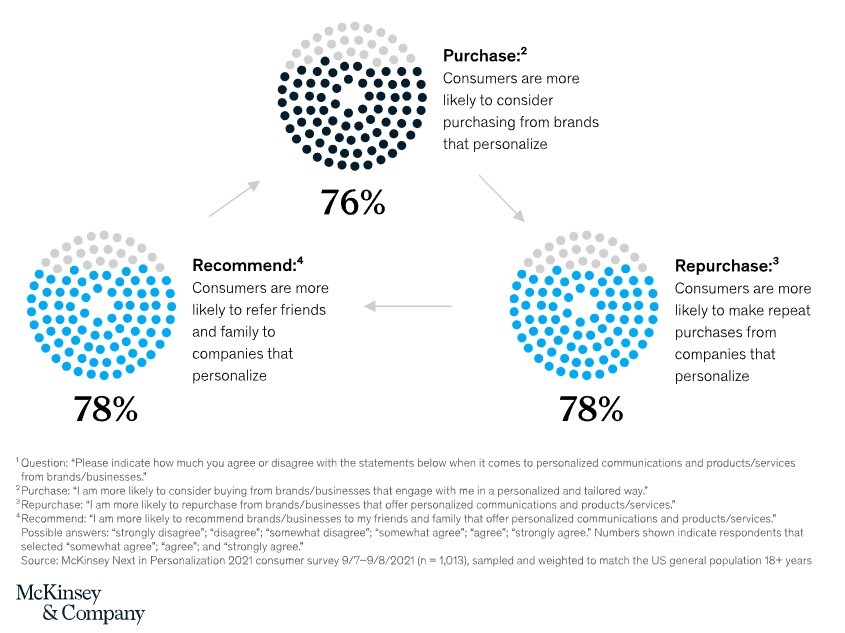
Most modern consumers agree that personalisation is everything to them when they shop in a physical or online store. According to McKinsey’s Next in Personalization 2021 report, 71% of consumers in the U.S. expect businesses to deliver communications, products and services tailored to their preferences.
Customers receiving personalised ads and promos are less likely to break the customer life cycle, as shown below. These effects are magnified among digitally native brands or those heavily relying on data for business decisions. As much as a quarter of their total revenue can come from personalisation, compared with 20% for brick-and-mortar stores.
As this piece has probably made clear, such reliance on data is integral for PPC retargeting. Data allows for the creation of buyer personas, which lets businesses get a clear picture of the content their consumers want to see. Questionnaires are usually the preferred medium for data gathering, but website action statistics is also a viable source.
Note that Google prohibits running personalised ads promoting sensitive interest categories. However, it’s allowable if Google pre-defines the target audience instead of the advertiser.
| Sensitive Interest Categories | Examples |
| Legal restrictions | Data collection on users under 13 |
| Information on prescription drugs | |
| Clinical trial recruitment | |
| Alcoholic drinks or drinks that resemble such | |
| Offline and online gambling | |
| Location-based gambling | |
| Personal hardships | Personal health content |
| Financial distress or deprivation | |
| Hardships with family or friends | |
| Commission of a crime | |
| Victims of abuse or traumatic events | |
| Imposing negativity or negative biases | |
| Identity and belief | Sexual orientation |
| Political affiliation | |
| Political content | |
| Trade union membership | |
| Race and ethnicity | |
| Religious belief | |
| Marginalised or vulnerable social groups | |
| Transgender identification | |
| Sexual interests | Birth control |
| Sexual content | |
| Access to opportunities (Countries: U.S., Canada) |
Housing for sale or rent |
| Employment opportunities | |
| Credit offers and credit lending |
2. Segmentation
A business’ customer base is, for lack of a better term, a mixed bag of nuts. It’s difficult, if not impossible, to know the amount of each kind of nut in the bag without sorting them out. While it may seem impractical for someone who’ll eat the whole bag anyway, it’s necessary for developing a solid PPC retargeting strategy.
In conducting cart segmentation for retargeting, most marketers group collective audiences into at least four categories. But don’t be limited to these categories; determine your needed groups based on your business’ goals.

The best retargeting approach varies by category. For example, customers who didn’t finish shopping can be enticed with retargeted PPC ads that feature similar products or best-selling equivalents. For those disheartened by the unexpectedly high shipping costs, offering them free shipping is a viable measure.
Segmentation is about determining a buyer’s pain points and dealing with them in the best possible way. If the cart abandoner finally completes their journey, you’ve nailed the pain point right where it hurts. Otherwise, it isn’t the one, and you’ll have to keep looking.
3. Behavioural and contextual targeting
Retargeting can either be behavioural or contextual. Using both methods is ideal because they compensate for each other’s disadvantages.
| Behavioural | Contextual | |
| Use of third-party cookies | Yes | No |
| Use of user search history | Yes | No |
| Fears of data collection | More likely | Less likely |
| Search relevance | Sometimes | Often |
| Operational cost | Low | High |
| Relevance to user | One user | Multiple users |
| User privacy protection | Moderate | High |
| Legal flexibility | Low | High |
Nonetheless, the current environment is leaning towards contextual targeting for several reasons. The most significant is Google’s decision to phase out third-party cookies in Chrome browsers by the latter half of 2024. Originally, it was scheduled for last year, but Google said its successor, the Privacy Sandbox, required further evaluation and testing.
Another reason is the slew of data privacy bills that has been signed into law over the past decade. Governments worldwide have stepped up their efforts to impose stricter regulations on protecting user information and penalties for violating these. Some examples include:
- European Union: General Data Privacy Regulation (also in the U.K.)
- United States: California Consumer Privacy Act (for California only)
- South Africa: Protection of Personal Information Act
- Canada: Personal Information Protection and Electronic Documents Act
- Philippines: Data Privacy Act of 2012
- China: Personal Information Protection Law
- Japan: Act on the Protection of Personal Information
- Australia: Privacy Act 1988 (with later amendments)
Does this mean that behavioural targeting will fall out of favour by 2024? It’s important to remember that we’ve been wrong about the death of many old practices, especially in SEO. Google’s Matt Cutts believed guest posting would no longer be a viable link building tactic, but here we are still doing it. Only time and business attitudes can tell.
Conclusion
Abandoned carts are an inevitability in e-commerce. Sometimes, customers aren’t ready to bring their carts to the checkout. At other times, they don’t complete their purchases due to difficulties.
However, cart abandonment shouldn’t be viewed as an irrecoverable failure. In many situations, customers only need a push in the right direction to get them to finish their purchases. This PPC retargeting guide can provide ample force when done correctly, leading to revenue that would be lost otherwise, perhaps to competitors.
Targeted ads are some of the things we do best at Pursuit Digital, from creating quality ad copies to designing their landing sites. Drop by this page to learn more about what we can do.
Subscribe to Our Blog
Stay up to date with the latest marketing, sales, service tips and news.


